IRAN-CONTRA: STILL A MYSTERY. Part 3: Media, Scholars, and public memory.
Why are media and academics giving people an official Iran-Contra story that they know is false?
If you didn’t read Part 2 yet, you may do so here:I examine the kind of ‘memory’ about Iran-Contra that the Extended Fourth Estate (press plus academia) has preserved for US citizens.
This case study will teach us how the major meaning-making institutions actually function.
This piece is the third in my series on Iran-Contra.
The Fourth Estate is usually understood to be the free press. But a free academic science should also be included in an Extended Fourth Estate. For the major media and the establishment scholars together define the politically relevant reality for millions of people. I’ll be saying ‘Fourth Estate,’ below, but I mean the Extended Fourth Estate.
A healthy—free and competitive Fourth Estate—is the functional keystone of a democratic polity. For when every other democratic institution fails, journalists and scholars can at least turn that failure into a scandal; if they don’t (or can’t), then democracy is perhaps in fatal trouble.
How to know if such fatal trouble has come to visit? There are ways.
As a test case, take the Extended Fourth Estate’s performance on the startling events of the Iran-Contra Affair: when Ronald Reagan and George Bush Sr. got caught sending billions of dollars in secret weapons to Ayatollah Ruhollah Khomeini, founder of jihadi-terrorist Iran.
The excuse Reagan-Bush gave when caught—that the weapons to Iran were ransom payments to secure the release of Hezbollah-held American hostages in Lebanon— was absurd on its face. But the fundamental problem is chronology: the dates make it impossible that this story can be true.
As Seymour Hersh pointed out in the New York Times some years after the Iran-Contra scandal broke, the arms transfers began in 1981, yet Hezbollah would not take its first hostage until 1982. Ergo, the decision to begin sending arms to Iran had absolutely nothing to do with Hezbollah-held hostages (see Part 2).
This is our dramatic fact.
What should a healthy Fourth Estate do with this? It should:
point out the dramatic fact; and
explain that Reagan-Bush committed treason.
This would elicit in the US citizen—the conned mark, who finally sees the swindle—the inevitable emotion: outrage. And citizen outrage is functional, for it demands an answer to the question:
What, then, if not trading arms for hostages, were Reagan and Co. doing?
And that imperative demand will spur new investigations—if no one else’s, then by the Fourth Estate.
Such inquiries by the Fourth Estate may then generate enough public pressure to force the system to right itself. Additionally, since outrage is powerfully felt, it binds to the key facts for storage in memory, equipping citizens, going forward, with a handy ‘signature’ of the crime, useful to recognize new crimes of the same type.
So, did the Fourth Estate, in the Iran-Contra Affair, perform these democratic functions? On a first pass, it appears not.
In a 2018 Quinnipiac University poll, US citizens voted Ronald Reagan “the best president since 1945.”1 How is this possible? The man who, acting as commander in chief of the US armed forces, sent billions of dollars in armament to a famous jihadi terrorist publicly pledged to destroy the United States—and who therefore committed treason—is remembered as “the best president”?
As Peter Kornbluh recognized in 2011, “despite the gravity of the scandal, and the intense political and media focus it generated in the late 1980s and early 1990s, Iran-Contra has been largely forgotten.”2 Yes, it was apparently forgotten long before that—before Reagan’s second term was over. And then George Bush Sr., on Reagan’s high-prestige coattails, became the next president. On Iran-Contra, it seems, the public’s operating RAM was rather abruptly wiped clean, and the long-term memory of it permanently blotted.
And yet, in 1991, on page one of the New York Times, Seymour Hersh did explain the utterly explosive dramatic fact—namely, that secret arms shipments to Iran began long before the first hostage was taken in Lebanon (see Part 2). So what happened? Was this somehow erased?
In one sense, no, it wasn’t. Seymour Hersh’s ‘The Iran Pipeline’ is still in the NYT archives and appears on my screen at the flick of a mouse. But to generate the right level of attention in the US citizenry, the media must communicate relevance via four sequential mechanisms, which I gloss as location, saturation, articulation, and tradition.
Location requires the dramatic fact to appear on page one (or its equivalent) in a respected news source (check).
Saturation requires this information to be replicated thereafter like a virus—and prominently—all over the media spectrum.
Articulation requires the media to explain, as the information is ceaselessly repeated, why the dramatic fact matters, and to make clear its functional and causal relationship to newer information.
Tradition requires university scholars to teach this whole structure—with ever improving context and analysis—to future generations of university and secondary-school students; and it requires journalists, in their passing references, to summarize the affair by highlighting the key dramatic fact on which the functional lesson turns.
It must all be done.
For even should one big media company honor the first step, location, reporting on page one the dramatic fact, the fundamental lesson—as a functional assist to the improvement of democracy—will still be lost if the remaining steps are absent. What matters politically, in other words, is not merely whether Hersh’s ‘Iran Pipeline’ article appeared on page one or whether it is reliably stored in the NYT’s archives; what matters, rather, is whether everyone was made aware of that, via a saturation campaign, and whether subsequent publications by media and scholars have communicated to US citizens the essential ‘signature’ of what happened, articulating events then with political reality now.
Because, if this is not done, historical facts simply disappear from public consciousness, as we explain here:
In other words, we have a proper Extended Fourth Estate—one that behaves as a true guardian of democracy—if and only if the tradition by which Iran-Contra is remembered has the right functional structure.
A proper forensic analysis, which here follows, must therefore perform an audit of the Extended Fourth Estate’s tradition of memory on Iran-Contra.
The scholars
An analysis of tradition—the behavior of scholars—performs a check on the whole system, because scholars can hardly be misrepresenting history if the press has acquitted itself reasonably well in the three prior steps.
And if the press has not performed adequately in those other steps, we expect, if at least the academic system is relatively free, that university scholars—secure in their tenure and jealous of their academic and constitutional freedoms—will correct that, remembering events from a position of formal autonomy that is relatively untainted by the demands of power. And they will denounce what is going on in the press.
So let us ask: What have the most relevant specialists—trained Ph.D.’s in political science and international relations—been writing about Iran-Contra?
More specifically: Given that Reagan-Bush’s public and official ‘arms for hostages’ excuse for Iran-Contra was decisively refuted (see Part 2), how have scholars been presenting Iran-Contra to their readers? Have they communicated that the Reagan-Bush story is impossible and, moreover, underlined that Reagan-Bush’s reasons for arming jihadist Iran remain a mystery?
To find out, I performed an exercise in the JSTOR database, which archives scholarly papers and book chapters from prestigious academic publishers. I searched, in the period 2000-2019, and within the categories ‘political science’ and ‘international relations,’ for entries that contained the string ‘Iran-Contra.’ Then I sorted by relevance and foraged in the results for any papers boasting at least a brief summary of the Iran-Contra scandal. (You may easily repeat this procedure; alternatively, try your own search with your own criteria).
What did I find? For illustration, here follow my very first three hits, presented in order of gravity (boldface is mine).
Example 1.
The first is a paper titled ‘Israel’s Construction of Iran as an Existential Threat,’ by Gareth Porter in the Journal of Palestine Studies:
“the Reagan administration [supplied] arms to Iran in return for the release of U.S. hostages being held in Lebanon … [in] the U.S. initiative that ultimately became known as the Iran-Contra affair.”3
Should a student of mine turn this in, that would be an F. For the above implies that we must take seriously, as presumed historical fact, the official Reagan-Bush ‘arms for hostages’ propaganda. The way Porter writes, the investigations reported by Seymour Hersh in his New York Times article, ‘The Iran Pipeline,’ which refuted that propaganda, might as well never have happened (see Part 2).
Example 2.
Then we have a book chapter: ‘A Brief History of Israeli-Iranian Cooperation and Confrontation’ by Dalia Dassa Kaye, Alireza Nader, and Parisa Roshan, in the book Israel and Iran (published by RAND, a famous Pentagon-affiliated think-tank). It contains the following brief summary of Iran-Contra:
“The Iran-Contra affair was the result of a secret effort by senior Reagan officials to free American hostages who had been held in Lebanon by Iran-sponsored Hizballah. … the United States was willing to sell [Iran] arms in the hopes of freeing the hostages and also financing the Contra guerillas…”4
Here, too, the ‘arms for hostages’ lie is restored to credibility.
The alleged additional rationale, “financing the Contra guerillas,” requires a short discussion.
The Contras were a group in Nicaragua composed of former members of deposed dictator Anastasio ‘Tachito’ Somoza Debayle’s National Guard and sundry hired mercenaries fighting the new, leftist Sandinista government. Ronald Reagan, in his efforts to gin up public support for the Contras, praised them as the “ ‘moral equal of our Founding Fathers.’ ” That, in the context of US political tradition, was calling them saints.
Former Contra leader Edgar Chamorro gave a different assessment when he was
“expelled from the Contras in 1984 after revealing corruption within the rebel movement and a CIA manual on jungle warfare that advocated assassination as a political means.”
In testimony to the World Court in the Hague, and in his dissident writings about his Contra experience,
“Chamorro said the CIA ‘did not discourage’ atrocities, such as Contras terrorizing villagers, slitting throats and mutilating bodies.”5
Here is one summary of Contra activities:
“The Contras have ambushed religious-aid workers, beheading a nun and riddling her body with bullets. They have also eviscerated a pregnant woman, shot campesinos (peasants) and slaughtered their animals, cut down Red Cross workers and bombed towns with their schools and hospitals.”6
But what did all that have to do with Iran?
Congress had passed the Boland Amendment forbidding assistance to this Nicaraguan terrorist force, so Reagan-Bush secretly got the Saudis and others to send funds to the Contras. In addition, a few ill-gotten monies from US arms sales to Iran were also diverted to the Contras.
It was this latter transaction that got all the media attention. The deluge of fully distracting “nauseating detail” in the congressional hearings was mostly on this (see Part 2).
And that was no coincidence. The Reagan White House worked hard to make that lonely transaction synonymous with the essential meaning of the whole scandal. And luckily for them (but was it luck?) the media called it the ‘Iran-Contra Scandal,’ an ideal moniker to prime—as psychologists say—the desired connection in the public mind, as it is almost a visual representation of monies going from Iran to the Contras. Look: Iran → Contra. “Did you hear about Iran-Contra?” “Oh yes, they used money from arms sales to Iran to fund the Contras.”
What was the point of this? So much “emphasis on the diversion,” that is, on the diversion of funds from weapons sales to Iran to fund the Contras, Kornbluh & Byrne explained, “constituted an effort to spin the burgeoning scandal away from the Oval Office and thereby save the presidency from another Watergate impeachment scenario.”7 And away from a treason trial!
But why was that supposed to work? Because the diversion of funds—itself—might be pinned exclusively, perhaps, on one Lieutenant Colonel Oliver North.
I know it sounds ridiculous but the world is ridiculous, because your reality is managed. With enough control over the media, it was possible to con everybody into thinking that all the brouhaha was over the proper (!) use of funds gained illegally from weapons sales to Iranian terrorists. (Diverting illegal funds to the Contra terrorists was bad, you see—never mind the original source of those illegal funds: covert weapons sales to the Iranian terrorists pledged to destroy the US.)
With this gambit, North, the scapegoat, the man responsible for that diversion, could suck all the spotlight and glare while Ronald Reagan and George Bush Sr. tiptoed quietly offstage. As “North argued [in his memoirs] … the Reagan administration, in effect, used the diversion as a diversion.”8
So everybody was made to focus on a detail that meant absolutely nothing.
For that diversion of funds—the only connection between the two illegal terrorist-funding schemes—really was a small detail, involving a rounding-error pittance: $12 million.9 Who cares about that? It was about one half of one percent of the value of Reagan-Bush weapons sent to Iran every year in the early 1980s (and that’s if we take the lower-bound estimate of “$2 billion a year” and not the “several billion a year” estimate that Seymour Hersh also included in ‘The Iran Pipeline’).
Getting the paltry sum of $12 million to the Contras was obviously not the reason Reagan-Bush sent Khomeini all those weapons. And that’s why, in ‘The Iran Pipeline,’ Hersh wrote that Reagan’s motive for arming Khomeini remained a mystery: “No American rationale for permitting covert arms sales to Iran could be established.”
So we find that the RAND-supported—that is, Pentagon-supported—scholars quoted above have accepted and combined both major propaganda lies that Reagan-Bush put forward to explain their motives: ‘arms for hostages’ and ‘diversion of funds for the Contras.’ And these scholars have done so, I might add, quite matter-of-factly. This is an F-.
Example 3.
The third result is Robert Gilbert’s paper, ‘The politics of presidential illness: Ronald Reagan and the Iran-Contra Scandal,’ published in Politics and the Life Sciences. It reads (p.63):
“[Reagan said] when he addressed the nation in March 1987: ‘I undertook the original Iran initiative in order to develop relations with those who might assume leadership in a post Khomeini government.’ But then he admitted to the country that, ‘What began as a strategic opening to Iran deteriorated in its implementation into trading arms for hostages.’ ”10
Gilbert writes as though Ronald Reagan’s explanation, proffered when his first lie failed, was a confession of the true facts (“he admitted”). But ‘arms-for-hostages’ was another Reagan-Bush lie (see Part 2). Then Gilbert adds:
“The most explosive aspect of the arrangement with Iran was that some of the financial proceeds from the deal were eventually passed on to ‘the Contras’ group of anti-government insurgents in Nicaragua…”
By calling this nothing detail “the most explosive aspect” of Iran-Contra, Gilbert reinstates the key Reagan-Bush propaganda gambit—their giant con. It is, once again, as if ‘The Iran Pipeline’ had never been published on page one of the New York Times. Another F-.
This is not a good average.
But are these three examples representative of the whole? I claim they are. But you need not (and should not!) take my word for it. I recommend that you repeat my search, or do a similar one, and look at scholarly papers containing summaries of Iran-Contra until you are quite satisfied. You may try Google Scholar if you do not have access to the JSTOR database.
The New York Times
The next obvious question is: What about the press? It seems inconceivable that scholars could afford to regurgitate Reagan-Bush propaganda if newspapers and other news media were routinely remembering Iran-Contra in a democratically functional manner. So let us consider the New York Times, ‘the newspaper of record,’ and the very publication where our dramatic fact—that Reagan-Bush began sending weapons to Khomeini long before any hostages were taken in Lebanon—was prominently reported.
In its original ‘Iran Pipeline’ article the Times dropped the ball on the mystery of motive, printing only that “No American rationale for permitting covert arms sales to Iran could be established” (see Part 2). Despite this negligence, the NYT might still abide by the absolute floor-minimum for an honest publication if it reminded readers, in later years, that Reagan-Bush’s official ‘arms-for-hostages’ and ‘Contra-funding’ stories lay soundly refuted, and hence that Reagan-Bush’s motives for arming Khomeini’s terrorists remained an open question. This would constitute a minimally functional democratic service.
Did the NYT meet this lowest possible standard?
To find out, I did a simple search that, again, you may easily repeat (or try a different one with your own criteria). In the Times archives, I asked for articles appearing in the year 2019 (the year I did this research) that contained the string ‘Iran-Contra,’ up to and including November (the month I did the search): 81 results. Flipping through them exhaustively, I found only three that contained at least a quick summary of the affair.
The first reads:
“Mr. Barr, who took over the [Justice] department in the fall of 1991, also urged Mr. Bush to pardon all six of the Reagan administration officials who faced criminal charges in an arms-for-hostages deal at the heart of the Iran-contra scandal.”11
This endorses—and with strong emphasis (“at the heart of”)—the Reagan-Bush propaganda, as if the NYT had not earlier published ‘The Iran Pipeline,’ which refuted the “arms-for-hostages” story. This gets an F.
The second NYT article reads:
“What is the Iran-contra affair? The Iran-contra affair was a political scandal that dogged the second half of the Reagan presidency. It centered on two controversial, and linked, actions undertaken by his administration. One was the sale of weapons to Iran, despite an embargo, purportedly to secure the release of American hostages held in Lebanon. The second was the use of proceeds from those weapons sales to support the right-wing contra rebels in Nicaragua in their fight against the leftist Sandinista government.”12
The word “purportedly,” which here undermines the official ‘arms-for-hostages’ claim, may give us a good feeling; strictly speaking, however, it is quite improper, as that claim was roundly refuted—and in the New York Times—so these authors should state directly, without ambiguity or circumlocution, that ‘arms for hostages’ must be considered false.
The deeper problem, however, is that Reagan-Bush’s damage-control gambit—their effort to focus attention, as the central meaning of the scandal, on Oliver North’s diversion to the Contras of a small pittance earned from covert Iranian arms sales—is here given credence as if it meant anything. This deserves an F-.
The third case reads:
“… senior administration officials were caught steering aid to anti-Marxist militants in Nicaragua despite a law forbidding such assistance. The scandal, known as Iran-contra …”13
The expression “steering aid” refers us once again, obliquely, to the $12 million pittance that Oliver North steered to the Contras from the covert Iranian arms sales proceeds. Except that Iran itself, as such, doesn’t even rate a mention here. Another F-.
Again, not a good average.

The New York Times, it appears, has opted for blotting out its own demonstration that Reagan-Bush’s official claims had been lies. You may do a simple search to confirm that other newspapers are no better.
And they can be worse. As you can see in the image above, the Wall Street Journal published an editorial by Peggy Noonan, Ronald Reagan’s speechwriter (!), once again dishing the Reagan-Bush ‘arms-for-hostages’ propaganda, and moreover dressing up an act of treason as a policy with “serious aims,” unlike other, less ‘worthy’ scandals.
You have to see this to believe this. They think we are idiots, I tell you. (Are they right?)
Seymour Hersh
But what about Seymour Hersh? If anyone can get this straight—and without having to search in anybody’s archives—it’s Hersh. He authored ‘The Iran Pipeline.’ He knows what he reported in the New York Times. So how did Hersh treat Iran-Contra in his subsequent work?
For illustration, consider ‘The Redirection’ (2007), a piece that Hersh wrote for The New Yorker to report on George Bush Jr.’s covert ops in the Middle East.14
In this piece, the Iran-Contra Affair rated a mention because “a few of the players back then are involved in today’s dealings.” In other words, the new president, George Bush Jr., son of Iran-Contra’s top co-conspirator (George Bush Sr.), had brought his dad’s Iran-Contra team back to office so they could play again in the Middle East.
This was a made-to-order opportunity for Hersh to become democracy’s immune system; to help his fellow US citizens spot, if present, the recurring ‘signature’ of past Iran-Contra crimes, and to help them use the memory of Iran-Contra to process other relevant information. So what did Hersh do?
Let us first provide some context on the topic of Hersh’s New Yorker essay.
Bush Jr., wrote Hersh, was
“coöperat[ing] with Saudi Arabia’s government … in clandestine operations,” thus “bolstering … Sunni extremist groups that espouse a militant vision of Islam and are hostile to America and sympathetic to Al Qaeda.”
Wait just a minute! So Bush Jr. was strengthening the very organization that, according to Bush Jr.’s own official narrative, had blown up New York and Washington in the famous 9-11 attacks early on in Bush Jr’s watch?
How did Hersh evaluate that? Oh, bolstering Al Qaeda was just an unintended “by-product” of Bush Jr.’s policy, Hersh wrote.
Well, that would be serious enough. Why was this policy not interrupted the minute the by-product effect, obvious to a journalist, became apparent? Good question. But in any case, the “by-product” claim, as it turned out, contradicted the thrust of Hersh’s own reporting.
Vali Nasr, from the Council on Foreign Relations (CFR), where US foreign policy is famously pre-cooked, was telling Hersh that “ ‘The Saudis have deep relations with the Muslim Brotherhood and the Salafis’ ”—that is, with Sunni extremist groups sympathetic to, or commanded by, Al Qaeda. The US government had to understand, therefore, that any policy to cooperate with Saudi clandestine operations would strengthen Al Qaeda.
Carried forward by this momentum, and forgetting apparently that he’d just told us, a few lines above, that strengthening Al Qaeda was supposedly an unintended “by-product” of Bush Jr.’s policy, Hersh now turned around and declared this selfsame policy a fully intended necessary evil: Bush Jr. was knowingly bolstering these Sunni terrorists because he was using them against the Iranian Shiite terrorists. Bush meant “to undermine Iran.”
Huh? Say what!?
If you put aside Hersh’s (adjacent!) contradictory statements, and also his eagerness, in his second statement, to accept official claims of motive from the very Iran-Contra operatives he himself had once exposed as consummate conmen, there is still a giant problem with what he writes. And I need to point this out because it is just so amazing: a paradox.
Ronald Reagan, George Bush Sr., and their Iran-Contra operatives, recall, had supported the Iranian Shiite terrorists with weapons transfers in the billions of dollars per year. They had risked everything to do that: their names, their office, their freedom, their lives (this was treason), and American democracy itself. Yet, after doing all of that, Bush Jr. now wanted these people, his father’s Iran-Contra operatives, to undermine these self-same Iranian Shiite terrorists?
That is the most dramatic policy reversal imaginable!
Anything like that calls for a careful investigation and discussion. At bare minimum, Hersh—the Iran-Contra specialist—should have made a special point of making readers notice the 180-degree flip. Instead, he just threw this all down as if it made obvious sense.
I must leave you to chew on that. For however interesting that paradox, we cannot deal with it here. My present quarry is this: What did Hersh provide for his readers, in the context of this discussion, by way of refresher on what Iran-Contra had been? The following, and nothing more:
“Two decades ago, the Reagan Administration attempted to fund the Nicaraguan contras illegally, with the help of secret arms sales to Iran. Saudi money was involved in what became known as the Iran-Contra scandal …”
This summary—radically hurried for the Iran-Contra expert that Hersh is—happens to be packed with politically relevant meaning. As such, it bears a close reading.
As already noted, precise dates are important to any investigation of causality, which is why chronology, as they say, is the backbone of historiography. The invocation of this principle, in fact, had been the entire point of Hersh’s 1991 ‘Iran Pipeline’ article in the New York Times.
To wit, the official arms-for-hostages story had claimed that secret arms shipments to Iran had begun in 1985, after—not before—the first Hezbollah hostage was taken in Lebanon in 1982. So Hersh made a special point of the fact that Reagan-Bush’s secret weapons to Iran—worth billions—had begun in 1981, before that first Hezbollah hostage-taking, thus demolishing Reagan-Bush’s official ‘arms for hostages’ story.
In this context, it is quite dramatic that, in ‘The Redirection,’ in 2007, Hersh should tell us that “secret arms sales to Iran” had begun “two decades ago.” Interpreted strictly, that means 1987; more liberally, 1985. In ‘The Redirection,’ therefore, Hersh was implicitly restoring to currency the earlier refuted—refuted by him!—Reagan-Bush timeline, on which the ‘arms for hostages’ propaganda rested.
And Hersh also wrote, as you can see above, that Reagan-Bush sold arms to Iran so they could “fund the Nicaraguan contras.”
Tremendous.
So, whereas in ‘The Iran Pipeline’ Hersh had explicitly written that “No American rationale for permitting covert arms sales to Iran could be established,” thus recognizing that Reagan-Bush’s official explanation lay in tatters, and that their reasons for arming the Iranian jihadists remained a mystery, by the time he wrote ‘The Redirection’ in 2007 he had miraculously discovered that missing “American rationale”: ‘arms for hostages’ (this is implied in his new dates), and Oliver North’s minuscule diversion of funds to the Contras!
Seymour Hersh—please grok this—ended up saying precisely what the Reagan-Bush White House had always wanted everyone to think.
For good measure: The Economist
But could this be happening in the US press if the Western press at large were remembering the Iran-Contra Affair correctly? Impossible. Lots of people in the West can and do watch and read the news product of different countries, and much of it is available in English anyway. So what was the wider Western press doing?
As a barometer for that, take a look at the London-based The Economist, easily the planet’s most prestigious magazine, whose ‘Intelligence Units’ proliferate on every topic and region of geopolitical significance, and whose every article, always an oracular unsigned editorial, is plagiarized the world over by intelligent, university-trained people—who occupy all the managerial roles in our private and public institutions—for their polite-society, cocktail-party repartee. What have these middle-class, academic, professional, and bureaucratic leaders of the West been learning from The Economist on the topic of Iran-Contra?
Consider this summary of the scandal, from 2019:
“In the Iran-Contra scandal, Ronald Reagan’s White House illegally sold arms to a regime with which America had no diplomatic ties in order covertly to fund a group of guerrilla fighters it was pretending not to help.”15
Seduced by The Economist’s inimitable ironic style, you could easily mistake the cleverness above for a criticism of mendacious government. In fact, it is just the opposite: The Economist is peddling, on behalf of Ronald Reagan and George Bush Sr., the Reagan-Bush con: that Reagan-Bush supposedly sent secret weapons to Iran “in order covertly to fund [the Contras].”
You may repeat this exercise with other non-US media. The result will be the same.
In closing, let us summarize these data. A dramatic fact that should have convicted a US president of treason was discovered. Then it was published. And a bit later it was abolished. By whom? By…
Western academic scholars;
the Western news system;
including the world’s most prestigious magazine;
the Western ‘newspaper of record’; and
the very journalist who first reported that dramatic fact.
As a literary exercise you may stop here to pluck the right words for a fitting expression of wonder. I myself—despite the enormous size of our English vocabulary—remain dumbfound.
But I’m at a loss for adjectives, not theories. In the next chapter of this series, Part 4, I will consider a model of the Extended Fourth Estate that can explain the curious outcome reviewed here, so favorable to Reagan & Bush.
IRAN-CONTRA: STILL A MYSTERY. Part 4: Did US Intelligence control media and academia?
Congressional Iran-Contra investigators in the 1980s found that Reagan-Bush had corrupted the entire Extended Fourth Estate (media plus academia)—and beyond. But senators and representatives in the US Congress blocked inclusion of that chapter in the official congressional report.
‘Trump Gets Most Votes As Worst President Since WWII, Quinnipiac University National Poll Finds; Reagan, Obama Top Trump 4-1 As Best President’; Quinnipiac University; 7 March 2018.
https://poll.qu.edu/Poll-Release-Legacy?releaseid=2526
‘The Iran-contra scandal, 25 years later’; Salon.com; 25 November 2011; by Peter Kornbluh
https://www.salon.com/2011/11/25/the_iran_contra_scandal_25_years_later/
PORTER, G. (2015). Israel’s Construction of Iran as an Existential Threat. Journal of Palestine Studies, 45(1 (177)), 43-62.
Retrieved from www.jstor.org/stable/26378543
Kaye, D., Nader, A., & Roshan, P. (2011). A Brief History of Israeli-Iranian Cooperation and Confrontation. In Israel and Iran: A Dangerous Rivalry (pp. 9-18). Santa Monica, CA; Arlington, VA; Pittsburgh, PA: RAND Corporation.
Retrieved from www.jstor.org/stable/10.7249/mg1143osd.7
U.S. operating 70 covert schemes ex-CIA man says, The Toronto Star, March 26, 1988, Saturday, SATURDAY SECOND EDITION, NEWS; Pg. A15, 449 words, By Robert Brehl Toronto Star
Contras cling to their war, The Toronto Star, April 29, 1990, Sunday, SUNDAY SECOND EDITION, NEWS; Pg. H1, 1030 words, By Linda Diebel Toronto Star, MANAGUA
Kornbluh, P., & Byrne, M. 1993. The Iran-Contra Scandal: The declassified history. New York: The New Press. (pp.xv-xvi)
Kornbluh, P., & Byrne, M. 1993. The Iran-Contra Scandal: The declassified history. New York: The New Press. (p.xvi)
Kornbluh, P., & Byrne, M. 1993. The Iran-Contra Scandal: The declassified history. New York: The New Press. (p.xv)
Gilbert, R. (2014). The politics of presidential illness: Ronald Reagan and the Iran-Contra Scandal. Politics and the Life Sciences, 33(2), 58-76.
Retrieved from www.jstor.org/stable/24893594
By EMILY BAZELON. (October 27, 2019 Sunday). Who Is Bill Barr?. The New York Times.
Retrieved from https://advance.lexis.com/api/document?collection=news&id=urn:contentItem:5XC7-1KR1-JBG3-62TG-00000-00&context=1516831.
By NIRAJ CHOKSHI and MATTHEW HAAG. (February 15, 2019 Friday). Why Elliott Abrams and Ilhan Omar Tangled Over U.S. Foreign Policy. The New York Times.
Retrieved from https://advance.lexis.com/api/document?collection=news&id=urn:contentItem:5VF1-P921-JBG3-63C5-00000-00&context=1516831.
By CHARLEY SAVAGE. (January 14, 2019 Monday). Barr Could Embolden a Limit-Pushing President. The New York Times.
Retrieved from https://advance.lexis.com/api/document?collection=news&id=urn:contentItem:5V66-MFT1-DXY4-X2G7-00000-00&context=1516831
‘The Redirection’; The New Yorker; 25 February 2007; by Seymour Hersh
https://www.newyorker.com/magazine/2007/03/05/the-redirection
The die is cast. (2019, Dec 14). The Economist, 433, 16-18.
Retrieved from http://bibproxy.itam.mx/docview/2325695909?accountid=40183


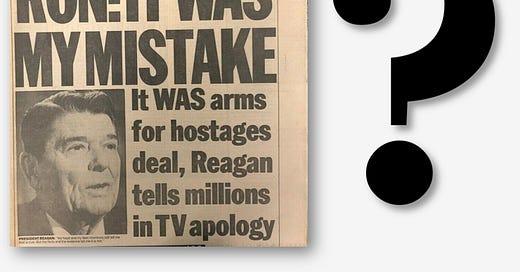





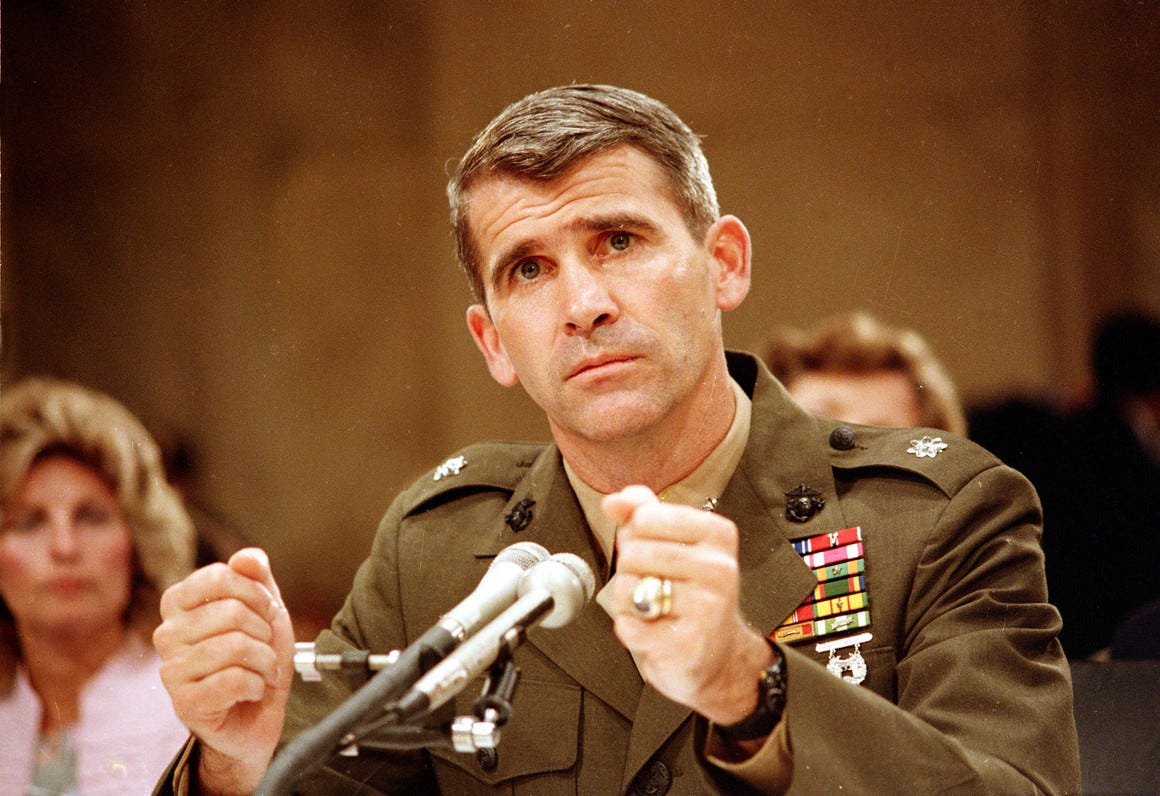


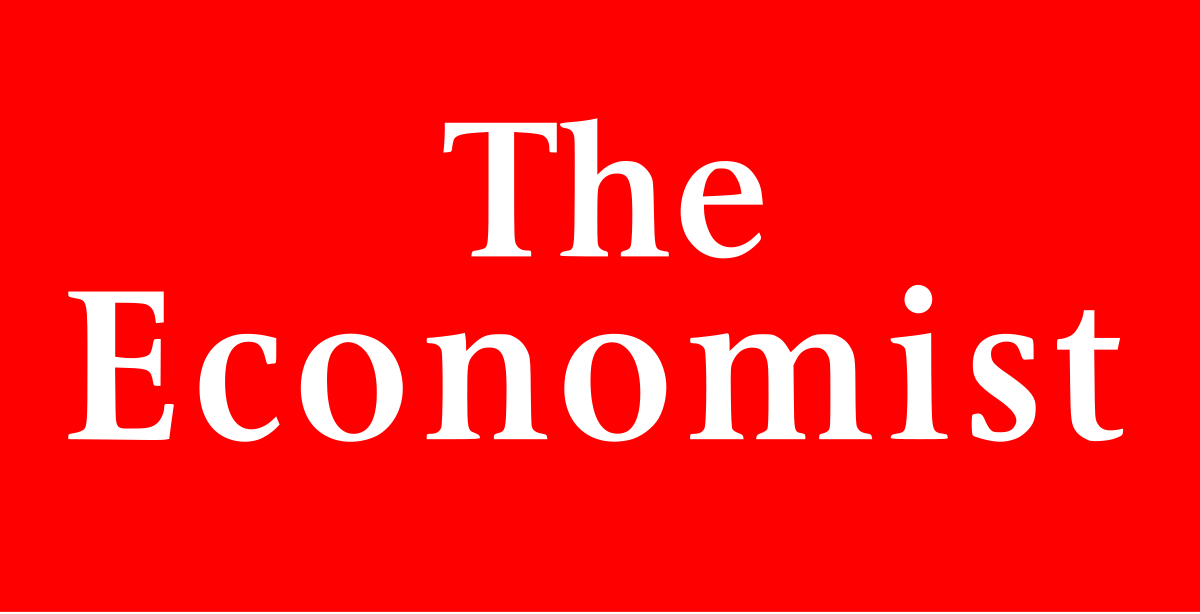
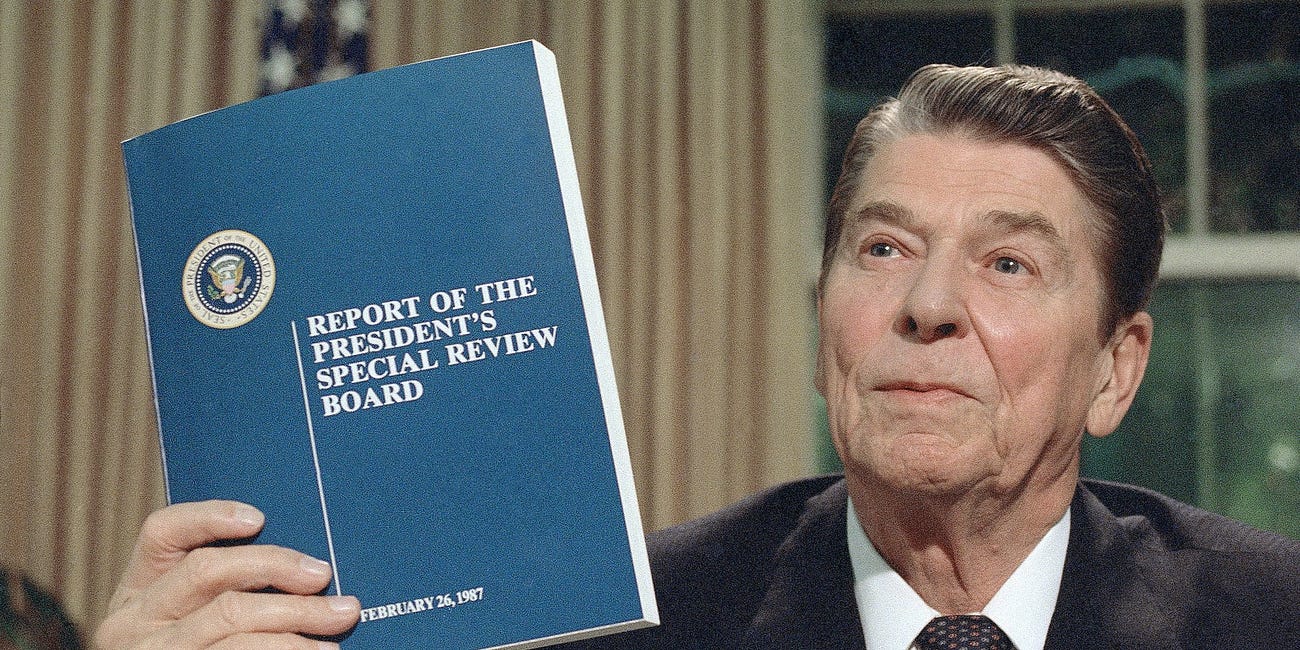
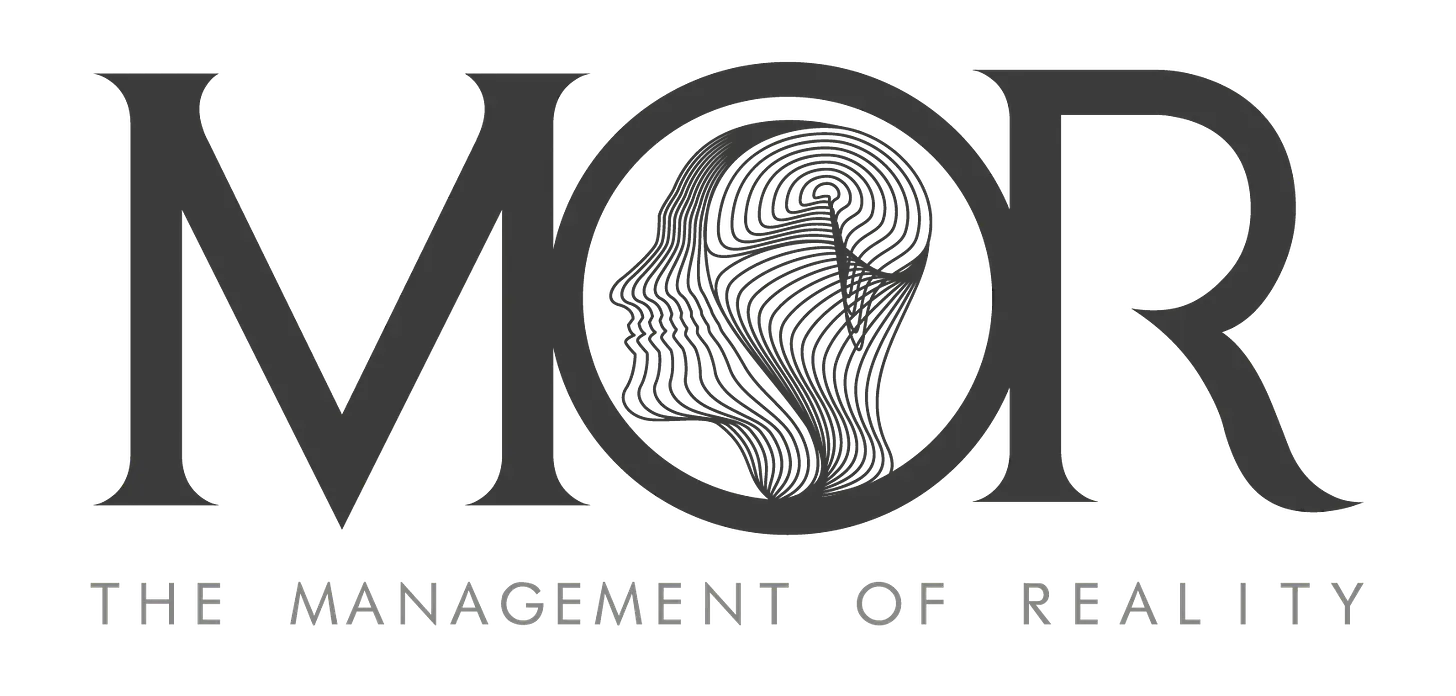
What's your take on Seymour Hirsch's Netanyahu derangement syndrome?
The objectivity vanishes when discussing him similar to Tom Friedman, possibly the propensity for Jews to point the finger at other Jews as the problem to try to supplicate the world?
24 of the 25 Jewish organizations in America endorsed the Oslo Peace accords but many were still naive at that time but those that weren't still played along.
Regarding the attention of the public:
Nothing draws a crowd quite like a crowd. —P. T. Barnum